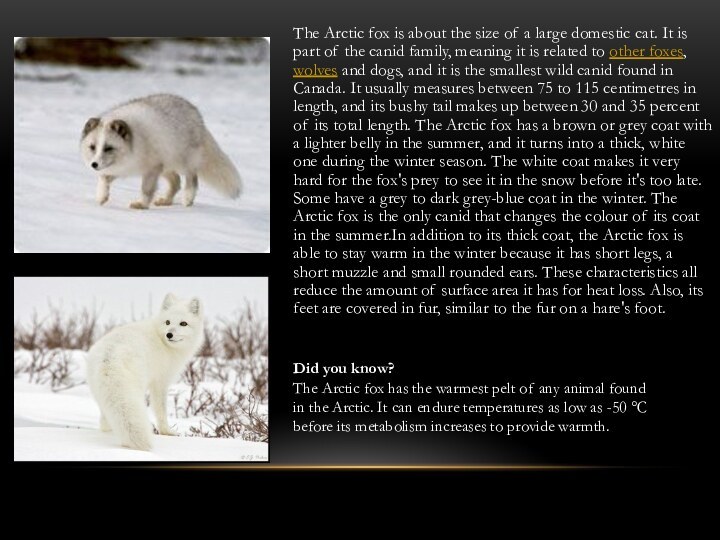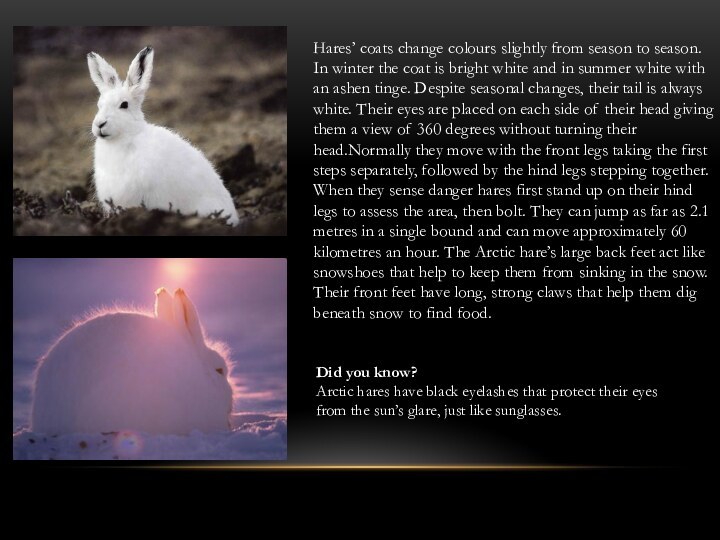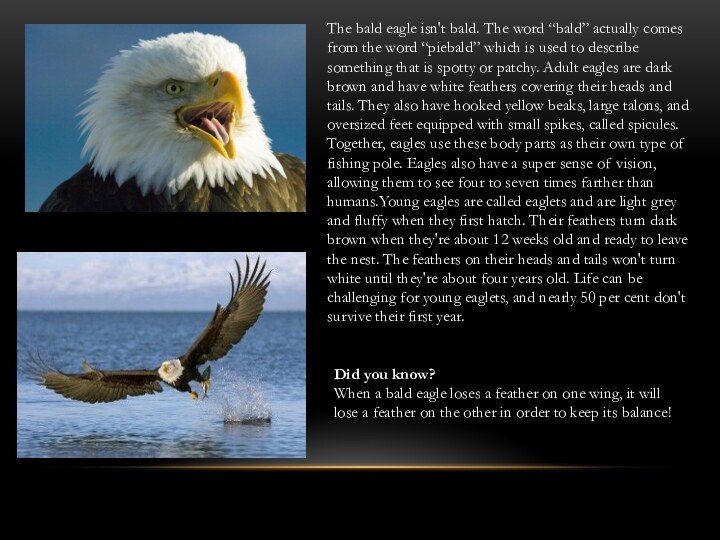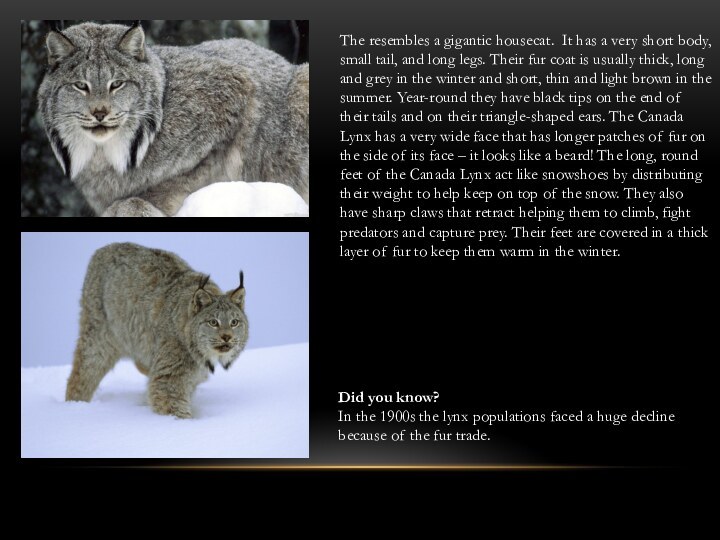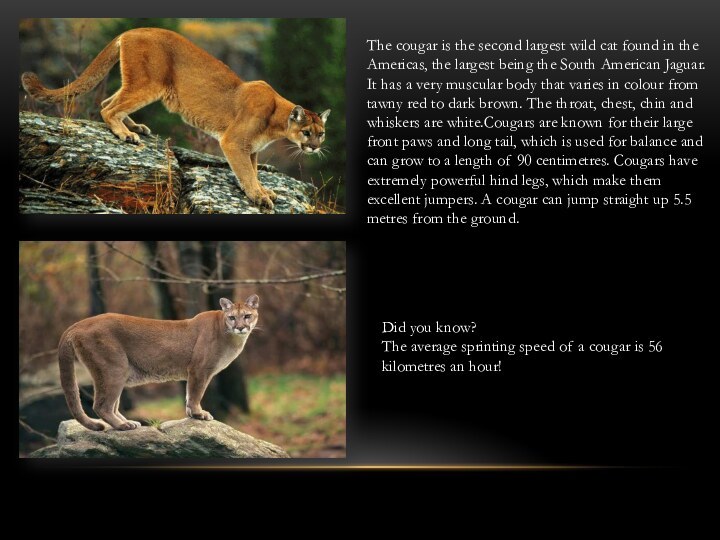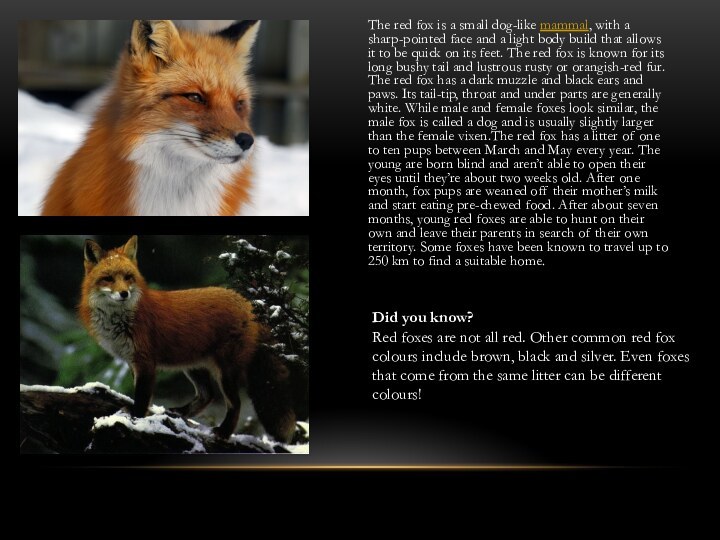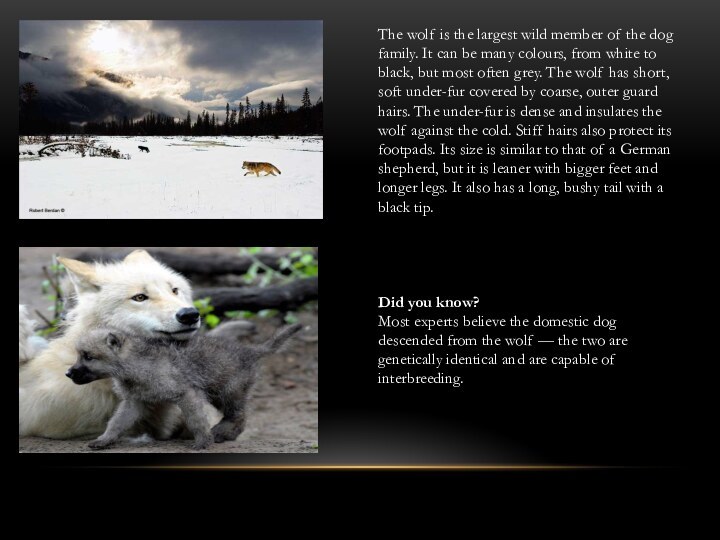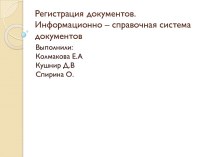a large domestic cat. It is part of the
canid family, meaning it is related to other foxes, wolves and dogs, and it is the smallest wild canid found in Canada. It usually measures between 75 to 115 centimetres in length, and its bushy tail makes up between 30 and 35 percent of its total length. The Arctic fox has a brown or grey coat with a lighter belly in the summer, and it turns into a thick, white one during the winter season. The white coat makes it very hard for the fox's prey to see it in the snow before it's too late. Some have a grey to dark grey-blue coat in the winter. The Arctic fox is the only canid that changes the colour of its coat in the summer.In addition to its thick coat, the Arctic fox is able to stay warm in the winter because it has short legs, a short muzzle and small rounded ears. These characteristics all reduce the amount of surface area it has for heat loss. Also, its feet are covered in fur, similar to the fur on a hare's foot.Did you know?
The Arctic fox has the warmest pelt of any animal found in the Arctic. It can endure temperatures as low as -50 °C before its metabolism increases to provide warmth.

